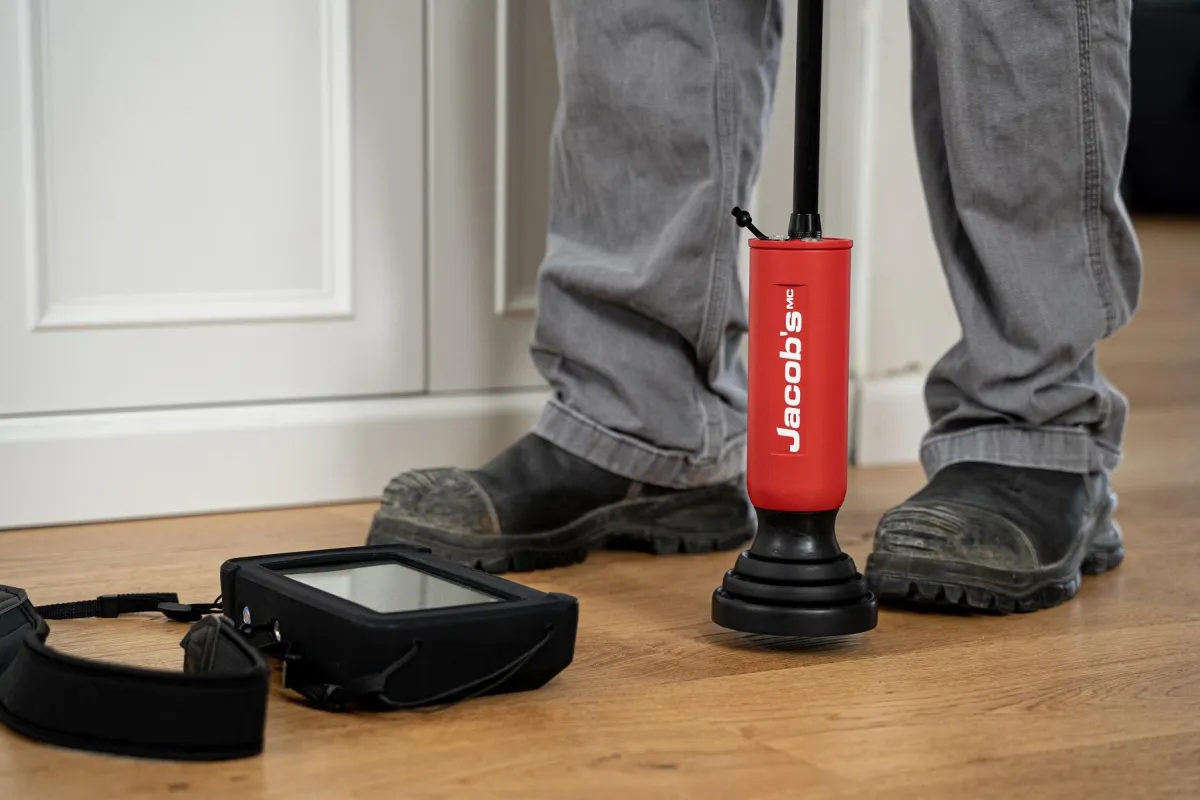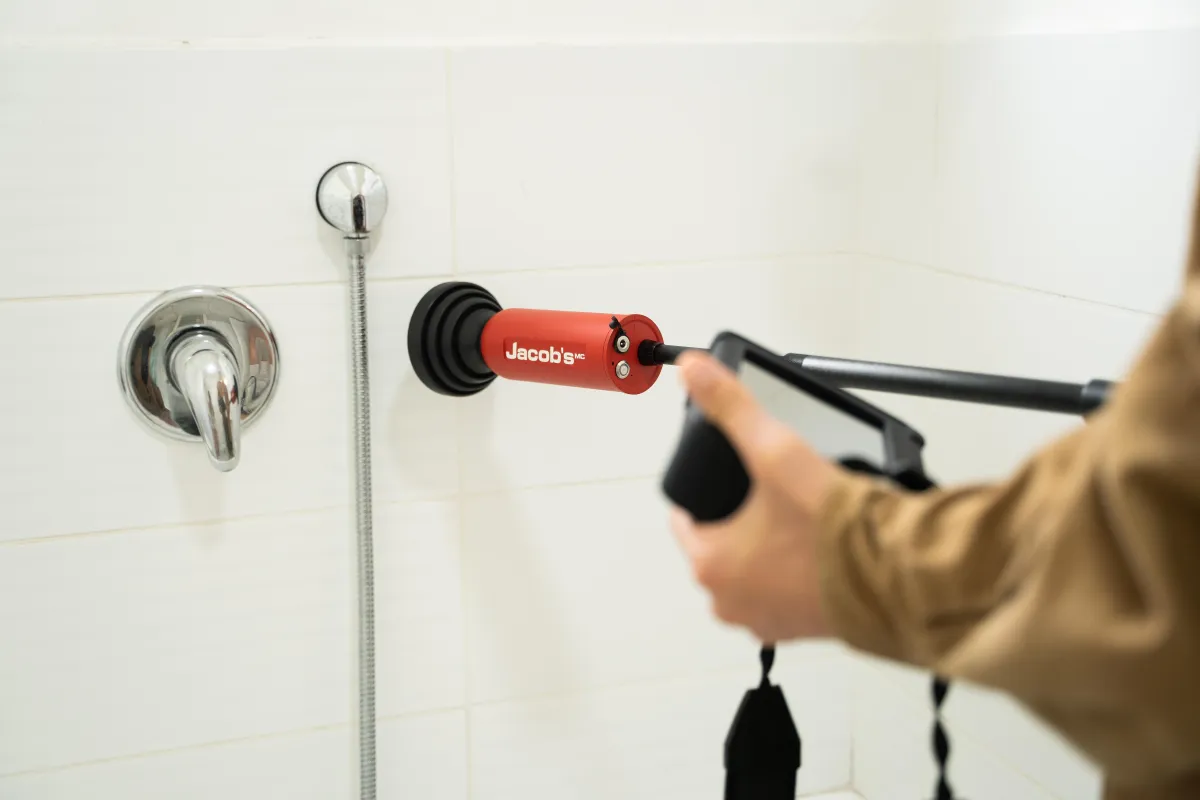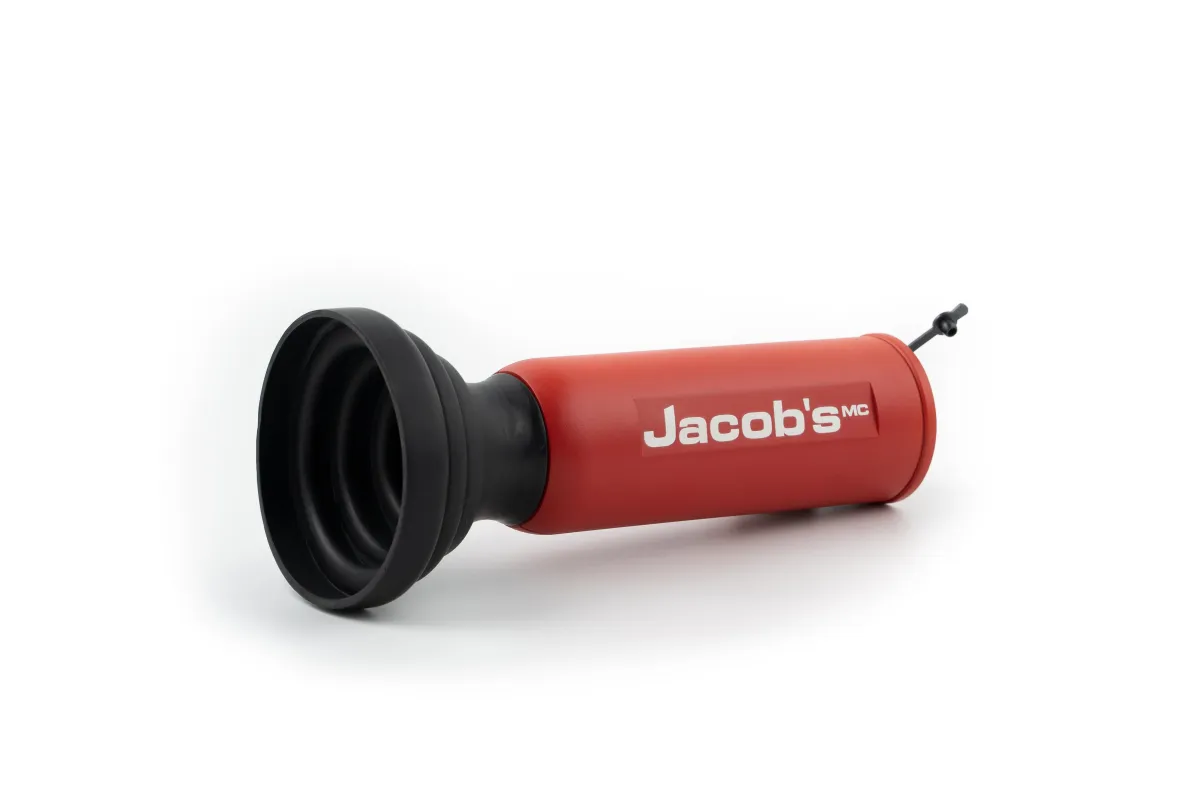Questions? Call: 305-742-8044
(M-F 10am-4pm EST)
SNIFFER430
"Headache Free Water Leak Detection"
$4450
SNIFFER430 is the easiest and fastest way to pinpoint water leaks.
Can locate leaks in 30 minutes or less – even 10ft deep or under concrete slab.
No training needed – just turn it on and follow the tracer gas to the leak source.
Minimize damage and keep clients happy – find the leak before breaking ground.

Watch This Video To Learn How Sniffer430 Works.
See how simple it is to use!
Watch These Videos To Learn How Sniffer430 Works.
See how simple it is to use!
Product Details

Product Overview
Sniffer430 is a state-of-the-art tracer gas water leak detector, designed to make leak detection fast, precise, and effortless. Sniffer430 has an extremely sensitive hydrogen sensor. When you pressurize a leaking water line with a 5% Hydrogen/95% Nitrogen Tracer Gas, the gas will exit through the leak. Then, Sniffer430 will sniff out the gas and allow you to follow it to the exact source of the leak.
Sniffer430 is used by hundreds of pros in over 21 countries. If you need results without the hassle, the Sniffer430 cuts downtime, reduces guesswork, and delivers the accuracy your clients trust, job after job. Our customers have reported detections over 10ft deep and through multiple feet of concrete slab.
Additional Features
Wireless Sensor - Detect leaks with freedom. Our highly sensitive wireless hydrogen sensor connects seamlessly to the screen unit, letting you move around the job site untethered.
7- Inch Touchscreen - Responsive capacitive touchscreen displays real-time gas readings, allowing you to take readings and work quickly.
Lightweight and Ergonomic - Work all day without strain. The sensor is light and will stay standing on it's own when placed down. The screen has an adjustable neck strap to make it easy to carry and use.
Flexible Rubber Cone - The black cone on the sensor is stiff yet offers the right amount of flex to allow you to get a good seal on surfaces and protect from bumps.
Audible Leak Alerts - The screen unit beeps faster as you get higher gas readings, guiding you to the exact spot without constant screen checks. (Don't worry, you can mute it or adjust the volume.)
Includes
Sniffer430 Screen Unit
Sniffer430 Sensor Unit
Dual Charger
Silicone Screen Bumper Case
Adjustable and Padded Neck Strap
Hard Case with Custom Fit Interior Padding
User Manual
Warranty Information
1 Year Manufacturer's Warranty with 1 Year Free Service - We’ve got your back. If anything goes wrong due to defects in materials or workmanship, we’ll repair it at no cost, no questions asked.
Service
Our Service Departments in the US and Europe are available to repair or replace damaged parts. We always aim to have an extremely fast turn around time. You can get get in touch with our team for quick troubleshooting assistance.
Show up, Pinpoint a leak, move on to the next job, and Repeat...

Underground
Turn a multi day leak hunt into a quick walk around the yard. Pick up gas readings from far away, and follow them back to the leak source.

Underfloor
The tiny hydrogen molecules penetrate dense materials like wood, ceramic tile, and other types of flooring. Our customers have detected leaks beneath multiple feet of concrete.

in wall
Confirm which wall the leak is behind, pinpoint the leak, and dig once. It’s the pro’s fast track to precision without tearing apart the whole room.

Why Tracer Gas Is A Game Changer for Water Leak Detection
Safe & Simple: 5% hydrogen/95% nitrogen mix is non-toxic, non-flammable, and eco-friendly.
Fastest and Most Accurate Detections: Hydrogen molecules slip through pores of the materials in the ground faster and spread evenly underground.
No need to drain the water lines: Simply connect the Tracer Gas, slightly pressurize the line, and the gas will exit through the leak.
Works in any kind of pipe material: All you need to do is isolate the line you are detecting on so it can be pressurized with the gas.
Find even the smallest pinhole leaks: Once a water line is pressurized, the Tracer Gas will exit through any size leak.
Watch Sniffer430 In Action
Frequently Asked Questions
Have Additional Questions?
Write Us A Message, We'll Respond Via Email ASAP!
What is hydrogen Tracer Gas Technology and how does it work?
The technology is based on the detection of a gas, referred to as “hydrogen tracer gas.” This gas is a pre-made blend of hydrogen (5%) and nitrogen (95%). It is injected into the system that is suspected of leaking, using a pressure cylinder and a regulator. The gas escapes the system through the leak and is identified by a sensitive hydrogen sensor in SNIFFER430. The detection application is somewhat similar to using a metal detector; the operator moves it side to side, close to the ground, and watches the display to identify the area with the highest concentration of gas, indicating the location of the leak. It really is that simple.
What's the difference between Tracer Gas, Acoustic, and Thermal Water Leak Detectors?
There are three main leak detection methods: Acoustic, which relies on sensitive hearing of the leak; Thermal, which tracks the temperature difference around the leak; and the Tracer Gas method. Among these, the tracer gas leak detection method is the most accurate, responsive, and reliable.
The Acoustic Method is probably the most common "old school" way of finding leaks. It is used for in house and garden water leak detection and big water lines, also pool leak detection.
- It can be a complicated process.
- It requires more experience (You need to know if the noise you hear is really a leak).
- You can only detect leaks that are producing hissing sound (i.e. very small leaks, very big leaks).
- You may need to filter out different acoustic noises to hear the leak.
- It's much more difficult to know the exact position of a leak.
- Less accurate because sound travels differently in various media, whether soft or hard.
The Thermal Method uses thermal cameras to find a difference in temperature which can identify a leak's approximate location.
- It's not always reliable because a leak does not always result in a noticeable temperature difference.
- It is not applicable for underground or pool leaks.
- It shows you position of water in the structure but thats not necessarily where the leak is.
- You need to have eye contact with the surface. If a leak is behind an object you will not see it.
- If water from the leak is not touching the surface you may not even notice it.
The Tracer Gas Method detects the actual gas escaping from the leak and can successfully detect leaks even through 10 feet of soil or through a thick layer of concrete. You inject tracer gas into the water pipe, then you walk along the pipes measuring gas readings. Once you know the general area, you play hot/cold until you find the leak.
- Tracer Gas can be bought locally,
- It's non toxic and safe, can be injected into water lines,
- You don’t need a license to carry this gas.
- You can only apply tracer gas in smaller diameter lines. Larger pipes need larger volume of gas. (Large city lines it its impractical.)
- Tracer gas may not go through different kinds of sealed materials. You may need to make small drill holes to let gas through, although this is not very common.
- If you test a pipe in a big empty space like a wall where the gas fills the whole space, you will not be able to locate the leak. However, this is acoustic and thermal devices also have this same issue.
- You can find extremely small leaks.
- You don’t need to have eye contact with the source of the leak.
- You detect the exact source of the leak, not just general water like with thermal devices.
Where can I get the Tracer Gas and the additional equipment?
The tracer gas, a commercial blend of 5% hydrogen and 95% nitrogen, can be purchased at welding or gas supply stores. We put together a helpful article with recommendations for purchasing Tracer Gas and finding a local supplier. Click Here to check it out!
How much gas do I need to use?
The amount of gas required depends on the size of the leaking system. To introduce the tracer gas into the system, it is only necessary to pressurize it slightly above atmospheric pressure, so 20-25 psi is usually sufficient. Even if the system contains water or other fluids, the tracer gas can be introduced; it will bubble through the liquid and find its way to the leak, where it can be detected by the sensitive sensor. We put together a helpful article to help you calculate Tracer Gas usage. Click Here to check it out!
Does SNIFFER430 have any maintenance or calibration requirements?
It’s important to keep the equipment clean and protected from water or humidity. Calibration of the sensor is not required.
What is the penetration capability of the gas?
The tracer gas is a blend of 5% hydrogen and 95% nitrogen. Due to the very small size of hydrogen molecules, they can penetrate through thick and dense materials. This makes successful detection possible even through 9-10 feet of soil and several inches of concrete. The exact depth of penetration varies and depends on the density and other physical properties of the material being penetrated.
What types of leaking systems can I inspect?
Given that the detection involves tracer gas, it can be injected into any system. Examples include hot and cold water systems, steam systems, propane or butane systems, oil and fuel systems, and more. Because the gas is non-toxic, you do not need to empty water lines before detection.
What is the lead time to receive a Jacob’s leak detection device?
Shipping and handling begins as soon as your payment is cleared. Orders will be shipped in 1-2 business days assuming we have available inventory. In the rare case that inventory is not readily available, you will be notified with your soonest possible shipping times and updated accordingly.
What are the warranty terms?
We offer a 1-year warranty on manufacturer defects or failures of mechanical or electrical components. The warranty does not cover damage due to water, broken parts resulting from mechanical impacts, or equipment failure due to dropping.
Request Purchase Info
Get a response from our team ASAP!
We're here to answer your questions with no sales pressure to help you make an informed decision.





